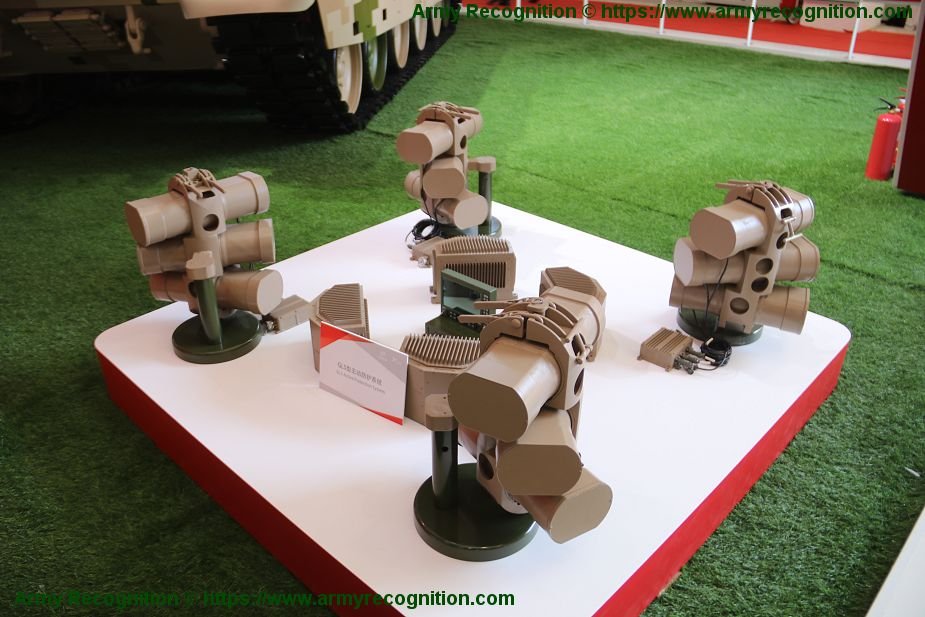Lots of people note that hard kill APS rarely have more than 2-4 rounds available on each aspect, ever wondered why? A(nother) thread!
When you look at projectile APS, most have 2-4 rounds (either ready rounds like an Iron Fist, or reloads like a Trophy). There are some exceptions, QuickKill had 8+ but that single pod covered all aspects, versus 2 or 3 per aspect on more traditional systems. So, 2-4 is the norm. 







Even non projectile systems tend to trend around here. StrikeShield/ADS has 2 per pod with adjacent pods able to defend one another, so again in the 2-4 window, give or take. 

Some people say that’s not enough, but in reality the maximum number required is somewhere between 1.5 and 4, and very much weighted to the lower end of that estimate.
How that figure is reached varies, and most of the work to inform it is classified, but there was a rare example of public facing data in a brace of TRADOC papers in 2000/2002 that show some of the rationale behind it
There are two key factors that drive this ammunition capacity – SwaP limits, and survivability of the system, the latter being the key one.
First though, SWaP – Space Weight and Power. The outside of a turret or hull is a busy place, and space claims are very limited. Finding unobstructed areas to put radars, EO sensors, launchers and all the cabling and boxes to go with them is not simple. 

Finding those locations that also do not impede the vision of sights and crew stations, nor interfere or are interfered by communications systems, jammers and other emitters/receivers/sensors again is not a simple ask of the designers. 

It also needs to be as light as possible. Systems like Trophy add as much as 2.2 tonnes to a vehicle, and all of that is up high on the turret, impacting CoG and other vehicle dynamics. Often (as with M1) you have to counterbalance the APS with yet more weight and space claim. 

And in the case of M1, CR3 and Leo2A7A1 you have to add further structures to the vehicle to mount all this on, with all three using new sponsons on the sides of the turret to mount their Trophy systems. 





That’s more weight on the turret and stabilisation, more weight on the suspension and powertrain, more volume for logistical concerns. Its just more everything. So the goal has to be the smallest and lightest possible, nothing more than required. So what is required?
Here is the modelling bit. Manufacturers and users conduct their own assessments, I’ve seen a few, and all mirror the broad approach of the TRADOC papers. Essentially it comes down to how long an APS is actually going to stay working in combat.
Because even if everything works perfectly, when an APS defeats an ATGM or RPG, a large volume of fragmentation and debris is projected over the vehicle. Whilst the marketing videos often show APS as a forcefield, they obviously are not.
That frag cloud will wash over the vehicle as that was the path of the projectile and will impact exposed systems. APS is not a behind armour system, it is located on the surface of the vehicle and even the wiring is typically in exposed conduits on the surface.
Things like radars and EO sensors cannot be readily armoured, and the mechanisms of the effector turrets similarly are vulnerable to damage.
So, assuming the APS works, and a threat is defeated c.50m from the vehicle, a fragmentation and debris cloud will still hit the vehicle. In very broad generalisation, this will be about 110 fragments. 

For a typical Trophy-like APS around 11 to 33 of these will hit an area that contains a critical APS component – radars, EO sensor, effector, munition, or cabling. Depending how many fragments, you get a probability that a critical system is hit and the APS degraded or destroyed.
You can then model out the likelihood across repeat engagements using a Markov chain approach, and it becomes increasingly likely the system is damaged beyond function and rendered inoperable, much moreso as fragmentation density increases.
Assuming the lightest end of the fragmentation estimate – 10 – then there is a possibility that the system could survive to 3.41 engagements before it is rendered inoperable. 

However at the more credible fragmentation density that number falls radically, with 1.55 being the most likely figure. So whilst statistically unlikely, you’re looking at 2 engagements and the system is dead. 

Ah but you could make the system smaller, then its less likely to be hit. Well, not really. The model shows that a typical APS has a presented area of c.2.5ft2. That would need to drop to between 0.2ft2 and 0.039 ft2 to achieve >95% survivability against 4 consecutive engagements
In essence, it is statistically unlikely for an APS to remain functional for more than one or two intercepts, and so designers and users have agreed that a safety net of three to four (however unlikely such a high figure may be) is a good maximum number of engagements required
Any more than this is overwhelmingly unlikely to be needed, and in fact is likely to mean a shorter effective life as the components will be larger and more likely to be hit by fragmentation and debris in the first place. So, 2-4 rounds is the norm.
There are a lot more factors, and this is just one of them, but shows within public domain some of the broad thinking that informs these sorts of decisions, which are far from arbitrary /end #AFVDesign #tanktwitter #miltwitter #AFVaDay
• • •
Missing some Tweet in this thread? You can try to
force a refresh





























